Abstract
Despite widespread advocacy of breast feeding, many babies are breast fed only briefly, if at all. Mothers' decisions on how to feed are often made before the birth; so we have sought demographic, social and psychological factors that might be amenable to intervention during pregnancy. In the Avon Longitudinal Study of Pregnancy and Childhood about 12,000 women completed questionnaires in pregnancy. Univariate analyses were carried out to establish which factors were related to breast feeding intentions. All significant factors in univariate analyses were entered into logistic regression analyses. Demographic characteristics independently related to intentions to breast feed included older maternal age, more maternal education, primiparity and not smoking; in previous work all these had been associated with actual feeding behaviour. Social relationship variables had a small influence. Of the psychological variables, a notable finding was that women who were preoccupied with their body shape and those who expressed controlling, less child-centred, responses to managing an infant in the postnatal months were less likely to express intentions to breast feed. Depression did not predict breast feeding intentions once the other factors had been taken into account. Health care professionals may be able to intervene to increase breast feeding by making routine enquiries during antenatal care and targeting appropriate subgroups.
Full text
PDF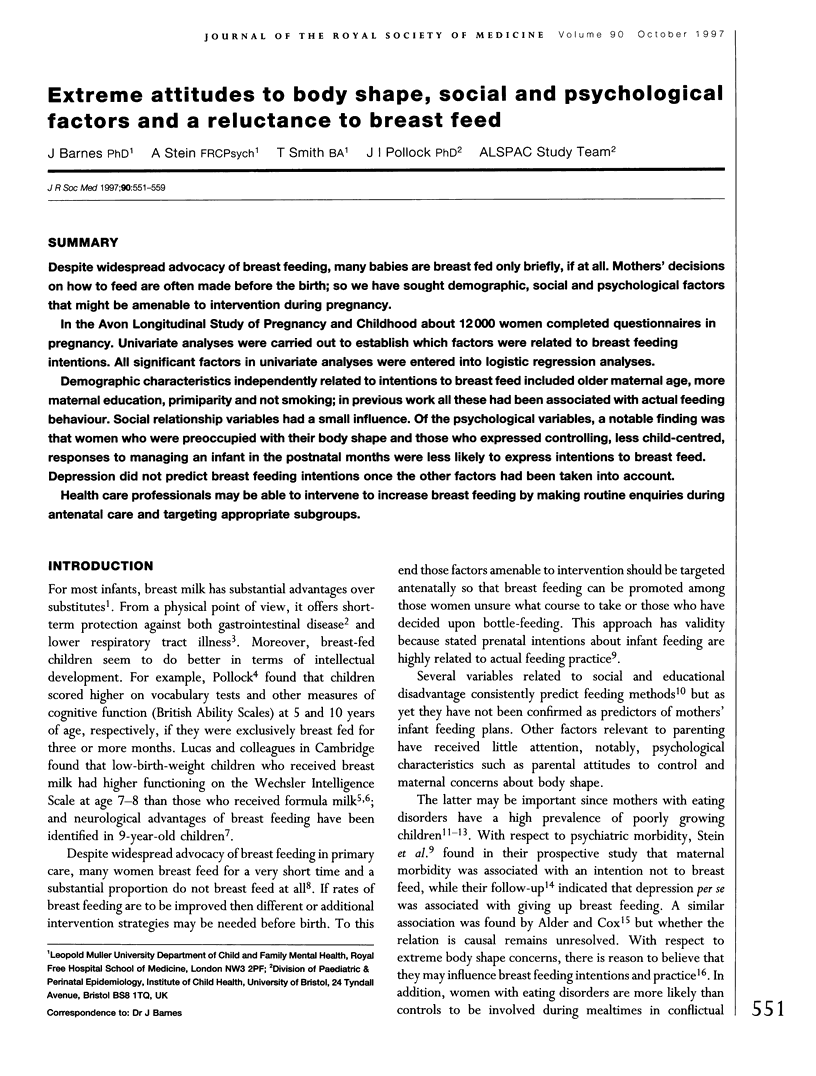
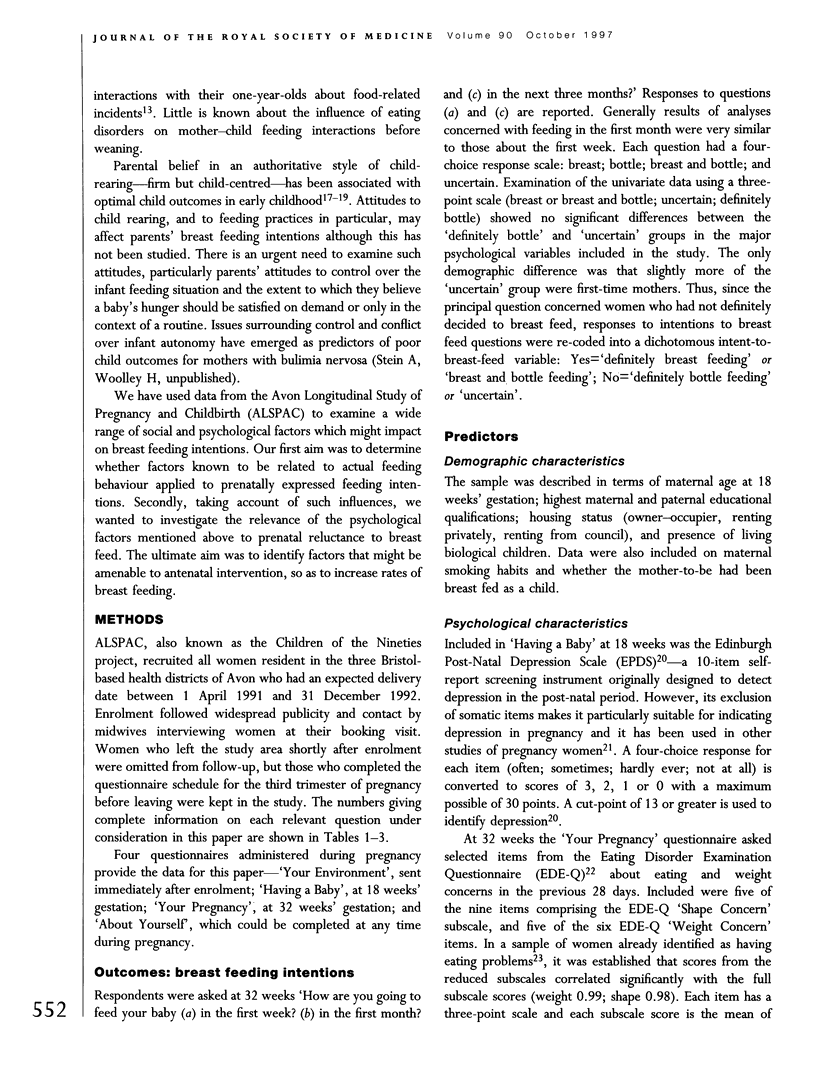
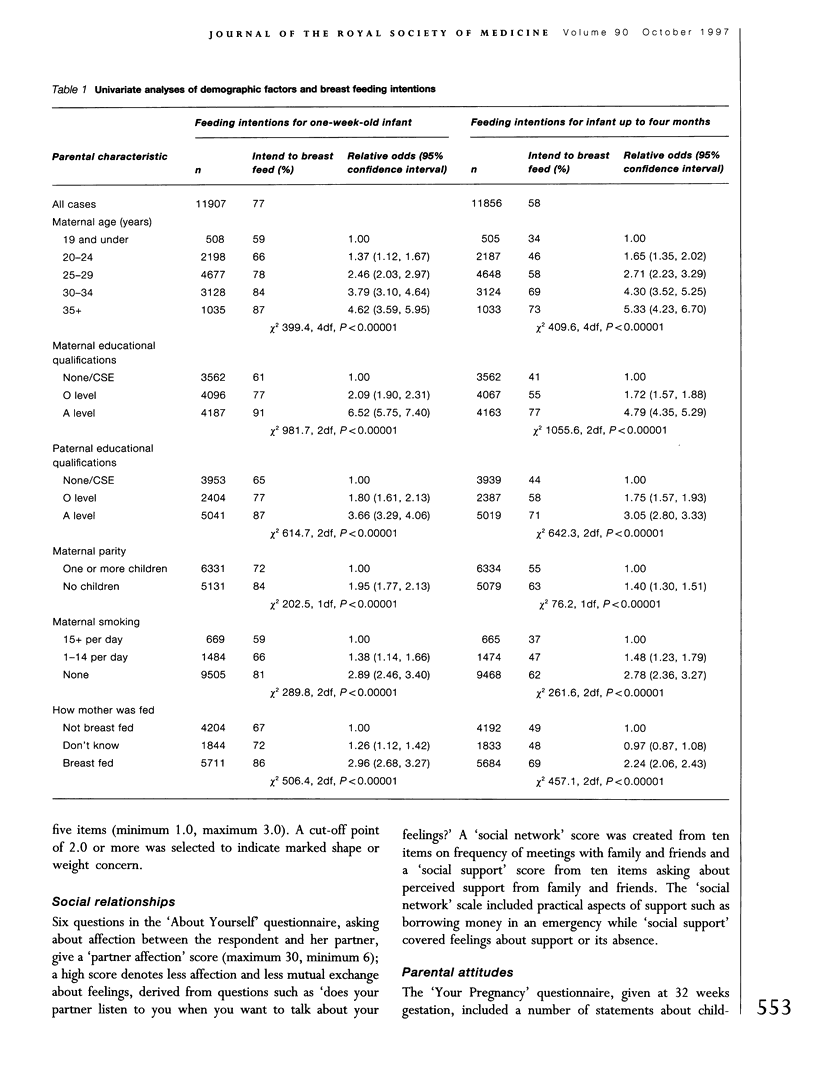
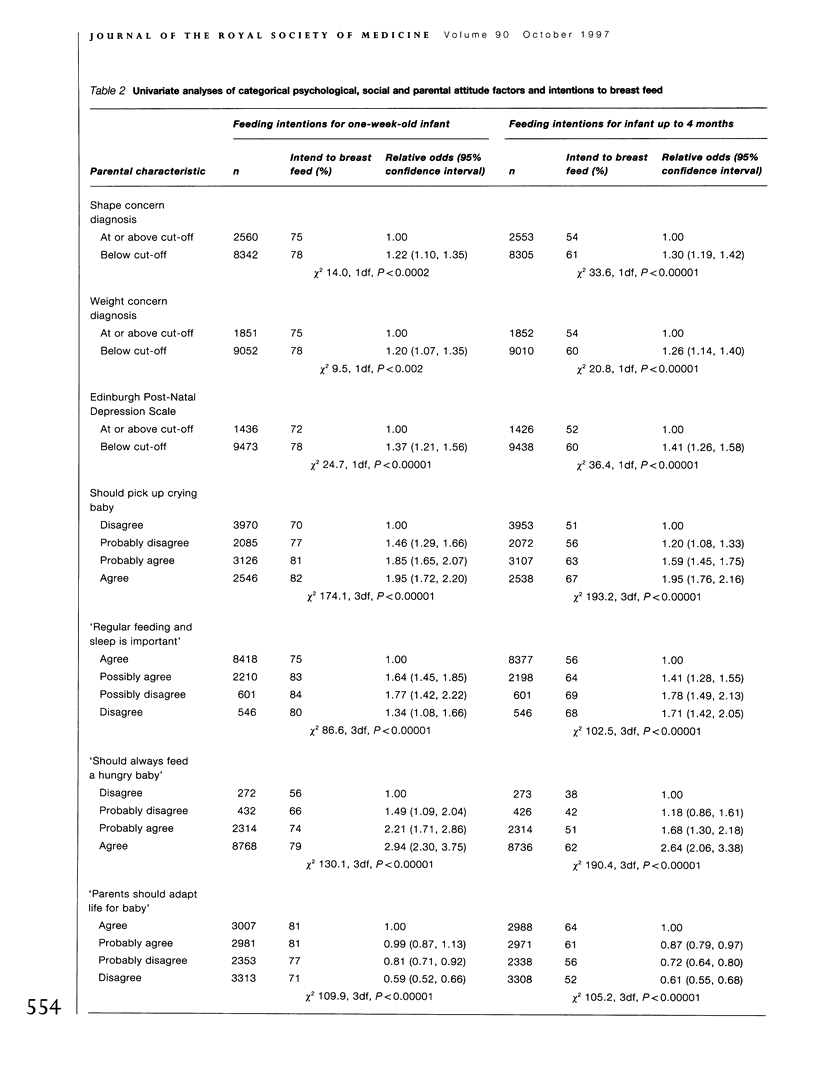
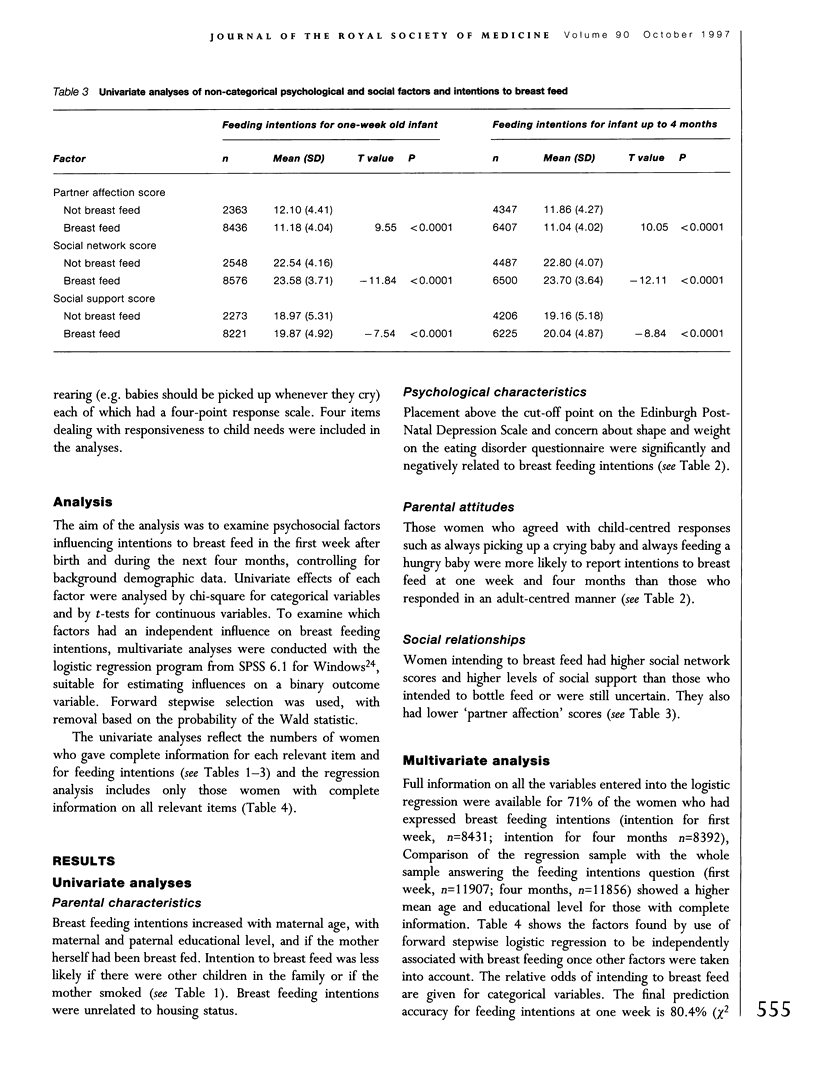
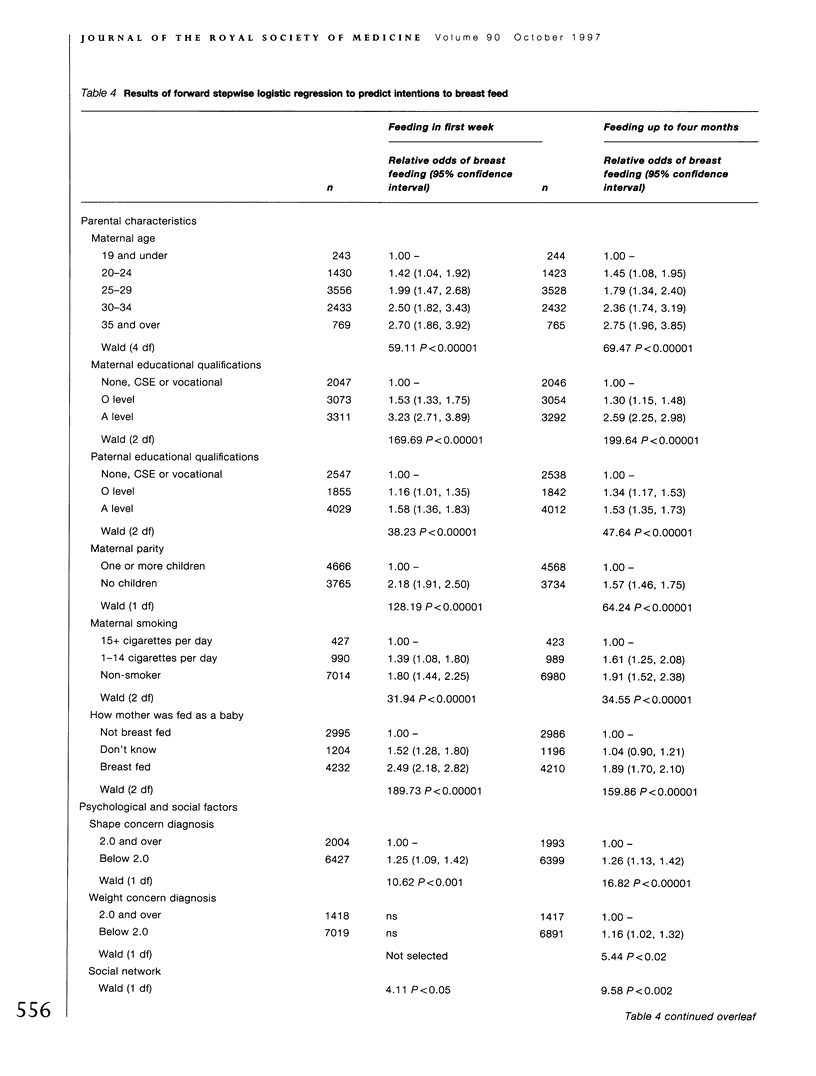
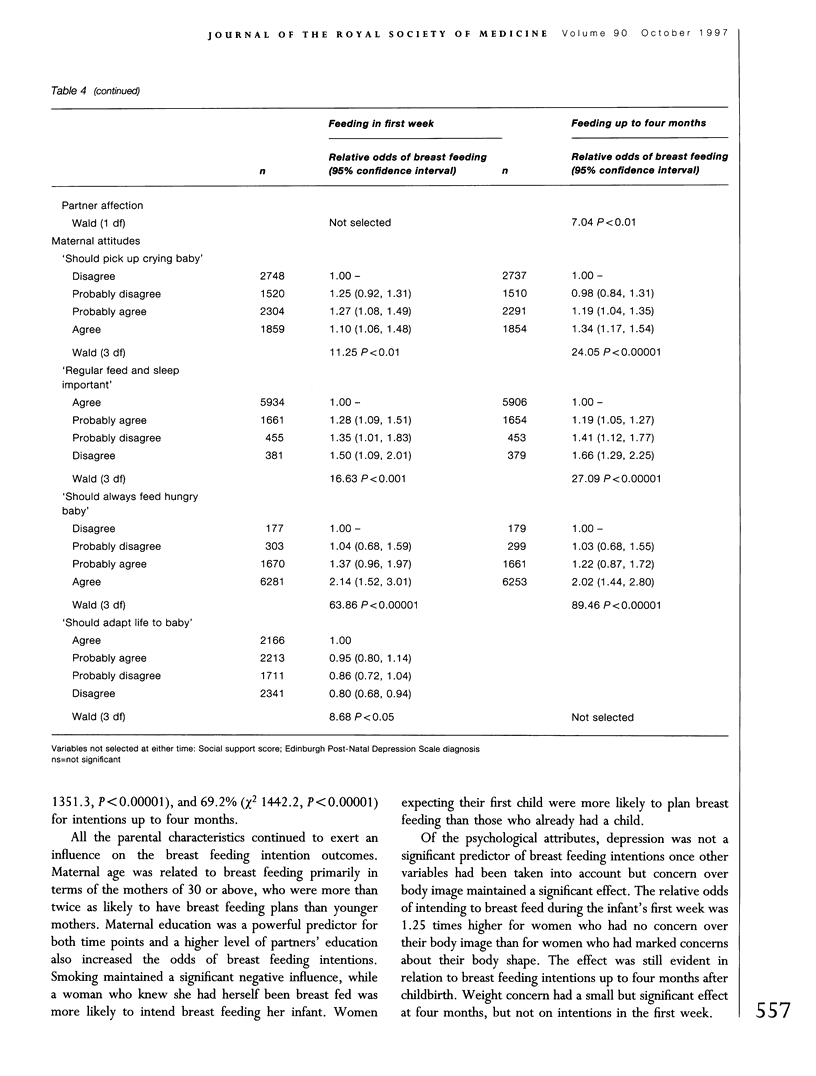
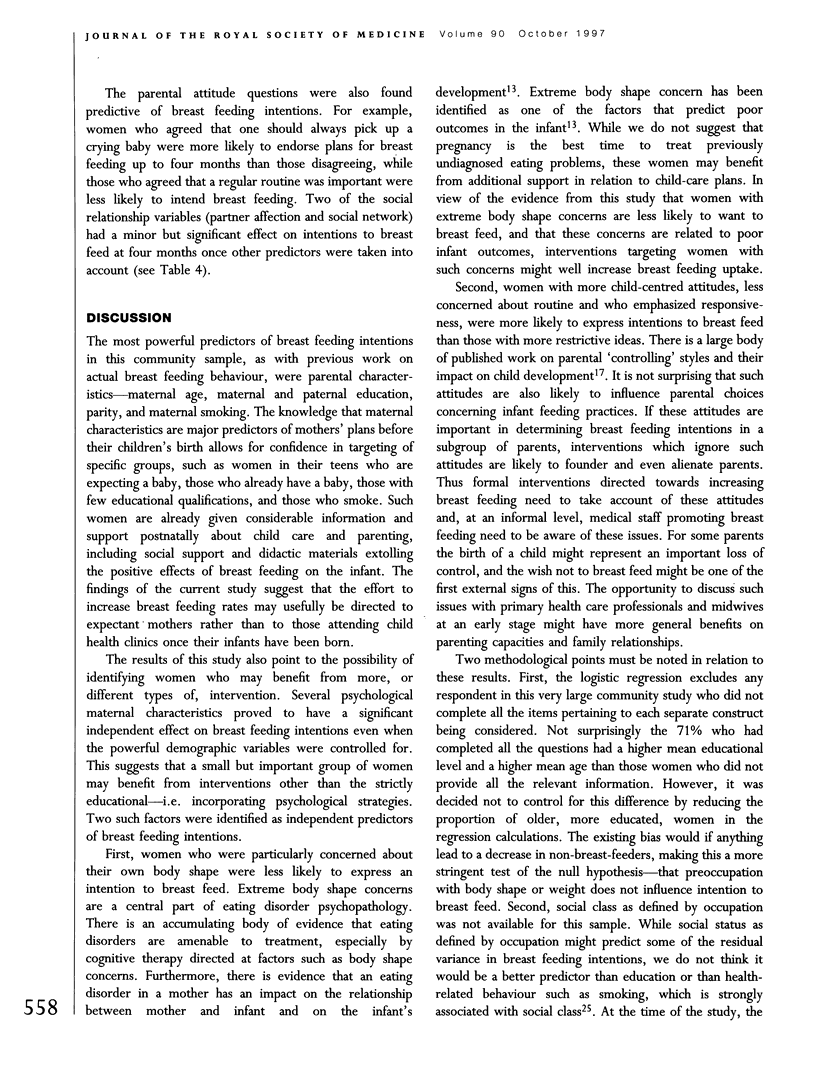
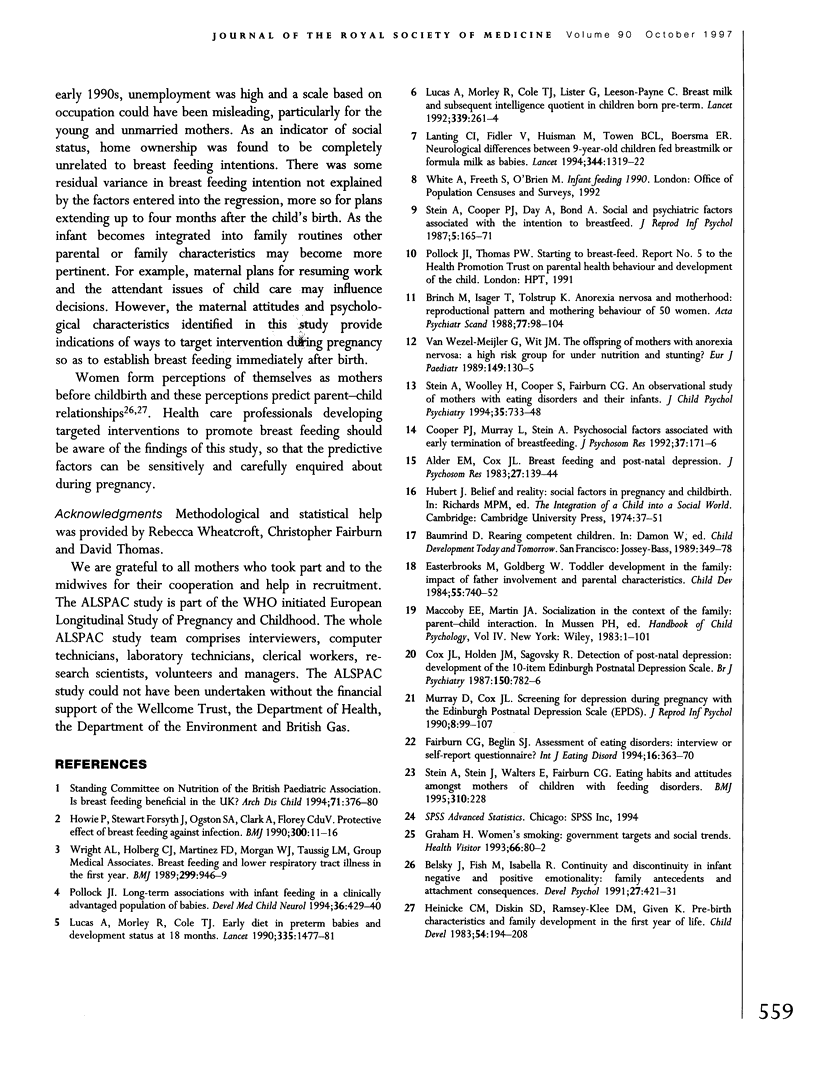
Selected References
These references are in PubMed. This may not be the complete list of references from this article.
- Alder E. M., Cox J. L. Breast feeding and post-natal depression. J Psychosom Res. 1983;27(2):139–144. doi: 10.1016/0022-3999(83)90090-9. [DOI] [PubMed] [Google Scholar]
- Cooper P. J., Murray L., Stein A. Psychosocial factors associated with the early termination of breast-feeding. J Psychosom Res. 1993;37(2):171–176. doi: 10.1016/0022-3999(93)90084-s. [DOI] [PubMed] [Google Scholar]
- Cox J. L., Holden J. M., Sagovsky R. Detection of postnatal depression. Development of the 10-item Edinburgh Postnatal Depression Scale. Br J Psychiatry. 1987 Jun;150:782–786. doi: 10.1192/bjp.150.6.782. [DOI] [PubMed] [Google Scholar]
- Easterbrooks M. A., Goldberg W. A. Toddler development in the family: impact of father involvement and parenting characteristics. Child Dev. 1984 Jun;55(3):740–752. [PubMed] [Google Scholar]
- Fairburn C. G., Beglin S. J. Assessment of eating disorders: interview or self-report questionnaire? Int J Eat Disord. 1994 Dec;16(4):363–370. [PubMed] [Google Scholar]
- Graham H. Women's smoking: government targets and social trends. Health Visit. 1993 Mar;66(3):80–82. [PubMed] [Google Scholar]
- Howie P. W., Forsyth J. S., Ogston S. A., Clark A., Florey C. D. Protective effect of breast feeding against infection. BMJ. 1990 Jan 6;300(6716):11–16. doi: 10.1136/bmj.300.6716.11. [DOI] [PMC free article] [PubMed] [Google Scholar]
- Lanting C. I., Fidler V., Huisman M., Touwen B. C., Boersma E. R. Neurological differences between 9-year-old children fed breast-milk or formula-milk as babies. Lancet. 1994 Nov 12;344(8933):1319–1322. doi: 10.1016/s0140-6736(94)90692-0. [DOI] [PubMed] [Google Scholar]
- Lucas A., Morley R., Cole T. J., Gore S. M., Lucas P. J., Crowle P., Pearse R., Boon A. J., Powell R. Early diet in preterm babies and developmental status at 18 months. Lancet. 1990 Jun 23;335(8704):1477–1481. doi: 10.1016/0140-6736(90)93026-l. [DOI] [PubMed] [Google Scholar]
- Lucas A., Morley R., Cole T. J., Lister G., Leeson-Payne C. Breast milk and subsequent intelligence quotient in children born preterm. Lancet. 1992 Feb 1;339(8788):261–264. doi: 10.1016/0140-6736(92)91329-7. [DOI] [PubMed] [Google Scholar]
- Pollock J. I. Long-term associations with infant feeding in a clinically advantaged population of babies. Dev Med Child Neurol. 1994 May;36(5):429–440. doi: 10.1111/j.1469-8749.1994.tb11869.x. [DOI] [PubMed] [Google Scholar]
- Stein A., Stein J., Walters E. A., Fairburn C. G. Eating habits and attitudes among mothers of children with feeding disorders. BMJ. 1995 Jan 28;310(6974):228–228. doi: 10.1136/bmj.310.6974.228. [DOI] [PMC free article] [PubMed] [Google Scholar]
- Stein A., Woolley H., Cooper S. D., Fairburn C. G. An observational study of mothers with eating disorders and their infants. J Child Psychol Psychiatry. 1994 May;35(4):733–748. doi: 10.1111/j.1469-7610.1994.tb01218.x. [DOI] [PubMed] [Google Scholar]
- Wright A. L., Holberg C. J., Martinez F. D., Morgan W. J., Taussig L. M. Breast feeding and lower respiratory tract illness in the first year of life. Group Health Medical Associates. BMJ. 1989 Oct 14;299(6705):946–949. doi: 10.1136/bmj.299.6705.946. [DOI] [PMC free article] [PubMed] [Google Scholar]
- van Wezel-Meijler G., Wit J. M. The offspring of mothers with anorexia nervosa: a high-risk group for undernutrition and stunting? Eur J Pediatr. 1989 Nov;149(2):130–135. doi: 10.1007/BF01995864. [DOI] [PubMed] [Google Scholar]


